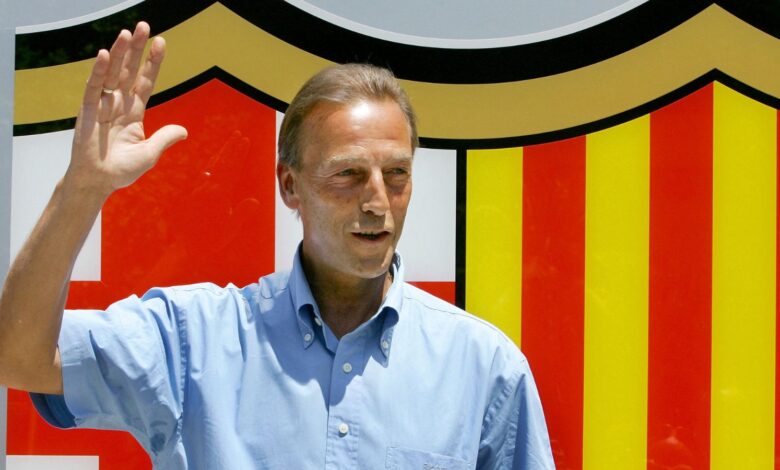The Total Footballer Johan Neeskens’ obituary: Master of art of pressing and a manual for modern-day midfielders | Football News

The Italian filmmaker Gianni Serra, marvelled Total Football, gushed on the two virtuosos that made football’s most idealic concept click: “If the oranges represent the Beatles of football, Cruyff and Neeskens are Lennon and McCartney: great alone, untouchable as a pair.”
If Johan Cruyff was the beating heart of Total Football, Johan Neeskens, who died on Monday aged 73, constituted its heaving legs. Neeskeens, a blend of robust energy and technical purity, often retreated to the shadow of his more celebrated namesake, but was as influential in wowing the world with the ideals that continue to influence the game. So much so that their guru Rinus Michels once stressed: “There is no Cruyff without Neeskens.”
Tall and muscular, with sharp blue eyes, flowing blonde hair and sideburns that touched his jaws, he was an immensely popular and likeable figure wherever he travelled, from Amsterdam to Barcelona and New York to anbul, where he coached. He top-scored for the doomed romantics of the 1974 World Cup, he essayed the second-minute penalty in the final against West Germany after one of the most enthralling passings-sequences of all time, but his biggest legacy is the redefinition of the box-to-box midfielder’s role.
“He was the first real box-to-box player: I never saw him stay down for more than three seconds. I don’t remember him losing a ball or an aerial duel,” his former Dutch colleague Sjaak Swart) once said.
At a time when the No 8 functioned as an auxiliary defensive midfielder, he infused creative energy. He was exceptional in performing the dirty work of ball retrieval, which he practised with refinement, but he was a creative force, had a range of svelte touches and turns, besides being a supreme finisher with both feet. The goal against Brazil in the 1974 game offered a peep into both his energy and elegance. Receiving the ball from a free kick in his half, he rolled the ball into Cruyff’s path, on his right. The latter drifted out and then cut in, before slicing the ball from the edge of the box to Neeskens, who stomps inside of his marker, slides and then lobs the ball over the keeper’s head with a first-touch finish.
In his career, he has been deployed in a variety of positions, he could play anywhere in the midfield, he could be slotted on the wings and as a second striker. His most definitive role though was at the heart of the midfield. He was so versatile that Cruyff when asked about his dream eleven once said: “My ideal team? 1 goalkeeper, 9 Johan Neeskens and a Cruyff up front.”
A right-back when he started professional football with Racing Club Heemstede, after turning down an offer to play baseball in the Dutch league, Ajax scouts picked him during a countryside tour in 1970. Michels then moulded him to a midfielder who could seamlessly switch from offence to defence and from conceiving a killer pass to thwarting in counter. He had the legs and lungs to match his brain and wits. His only thought when stepping onto the field, he said, was, “ I always want to win and get the ball – I am not concerned about myself.”
He is a timeless manual for modern footballers. He mastered the art of pressing, which is fundamental to the modern game. Jurgen Klopp would diligently study his footage in his early coaching days. Cruyff would cite him as an example to his Barcelona wards as how to hide the ball when the team protected a slender lead.
But like several of the Dutch technicians of the Total Football era, his career began to taper off in his early 30s. All those running wreaked havoc on his legs. He gradually lost his speed, although he compensated with tactical intelligence. The transfer to Barcelona too did not work out as well as he had imagined. The devout took time to embrace him, as he had replaced the local hero, Hugo Sotil. He soon won them over, but at the peak of his popularity, he was shunted out to New York Cosmos for allegedly refusing to pass toilet paper to then director of the Catalan club, Jose Luis Nunez. The time in New York was strained, where he fell out with manager Hennes Weisweiler and spent almost a year on the reserves, and reportedly drifted into substance abuse and gambling.
Former Dutch soccer international Frank Rijkaard (R) toasts his new assant Johan Neeskens at the Dutch soccer association’s headquarters in Ze August 31./File Photo
His Ajax coach once hinted that alcohol stalled his career from scaling the height his talents suggested. He replied with a quintessential sense of humour. “I drank wine at dinner. The rest of the time I drink not too much.”
His foray into coaching was less successful, unlike Cruyff, with whom he reunited in 2006 as assant coach with Barcelona when Cruyff was the technical director. Two years later, he embarked on a doomed coaching Odyssey, before shrinking into anonymity. He broke down at the death of his close friend in 2016 and eight years later he joined him, leaving a legacy as rich and relevant in modern football. The immortal Beatles of Dutch football.



